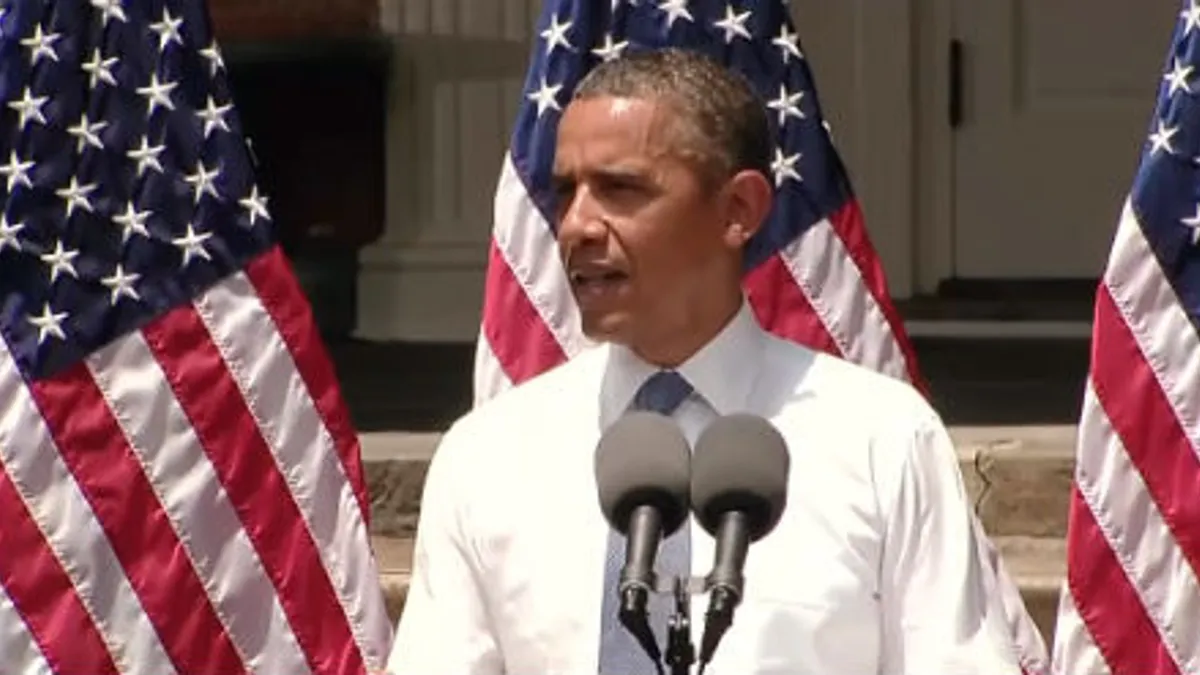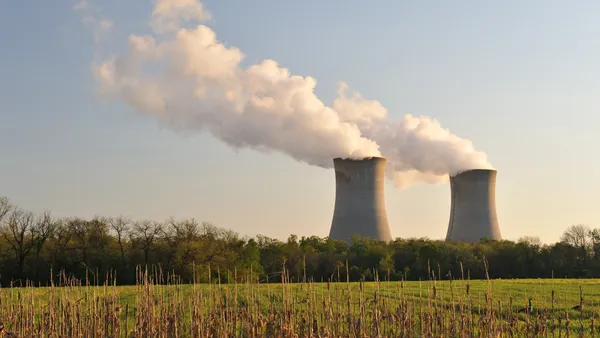Dive Brief:
- In what many are calling the strongest federal action to combat climate change in U.S. history, President Obama will announce regulations Monday morning aimed at cutting carbon dioxide emissions from the electric power sector 32% nationwide by 2030.
- The final rules are a strengthened version of a draft proposal released last June, which called for a 30% reduction in CO2 emissions from 2005 levels. Among several significant changes made to the draft proposal, the final rules will give states and electric utilities more time to implement the regulations, extending the initial compliance deadline to 2022, two years longer than originally proposed.
- The final rules will also require states and utilities to use more renewable energy, raising the share of generation that renewables should account for from 22% to 28% by 2030. New coal units could only meet the standards with technologies that capture carbon emissions or convert coal into a synthetic gas for cleaner burning. Efficiency standards and under-construction nuclear plants were left out of state goals under the plan, but are still available as compliance options, according to a White House fact sheet on the regulations.
Dive Insight:
When word got out last week that the Obama administration was going to give states and utilities more time to comply with new carbon regulations under the final Clean Power Plan, many environmentalists wondered if the finalized rules would be enough to meet the Obama administration's climate change goals.
The administration acted quickly to quell the concerns, insisting through Chief of Staff Denis McDonough that the final rule would be stronger than the one proposed last year, despite the extended timeframe.
It appears McDonough wasn't just telling the environmental community what they wanted to hear, as the finalized Clean Power Plan requires deeper emissions cuts and an increased reliance on renewable resources. The revised plan keeps its original structure — setting out three "building blocks" for states to follow in reducing emisisons — but jettisons the fourth building block, which pushed states to reduce electricity consumption through energy efficiency.
An administration offical told E&E Publishing that efficiency remains a compliance option and that they still expect "very significant" investment in efficiency as a result of the plan, as it is the most cost-effective way of reducing emissions.
New coal plants will be able to comply with the rule with a range of pollution abatement options, officials told E&E in a separate article, including carbon capture and storage and integrated gasification combined cycle. New nuclear plants are not explicitly included in state goals, but can be used in compliance plans because they produce no carbon emissions.
Answering two major concerns of the power sector, the EPA's final rule includes a "glide path" for compliance to 2030, with incentives for states to move earlier to curb emissions and integrate more renewables, and a "reliability safety valve" to address individual outage concerns.
The final rules include more flexibility for states to comply, the EPA said in its fact sheet, and allows them to develop 'trading ready' plans to participate in emissions trading markets without the need for interstate agreements.
The EPA will also release a federal implementation plan to "provide a model" for state plans and to act as a "backstop to ensure that the Clean Power Plan standards are met in every state." A handful of states have already indicated they may not submit compliance plans to the EPA, while Senate Majority Leader Mitch McConnell (R-KY) has urged states to "just say no" to complying with the plan.
In addition to expected political backlash, the release of the final plan will have legal implications as well. A coalition of 14 states last week appealed to the D.C. Circuit Court to block the rule's release, and a case pertaining to the regulations is widely expected to end up at the Supreme Court.














